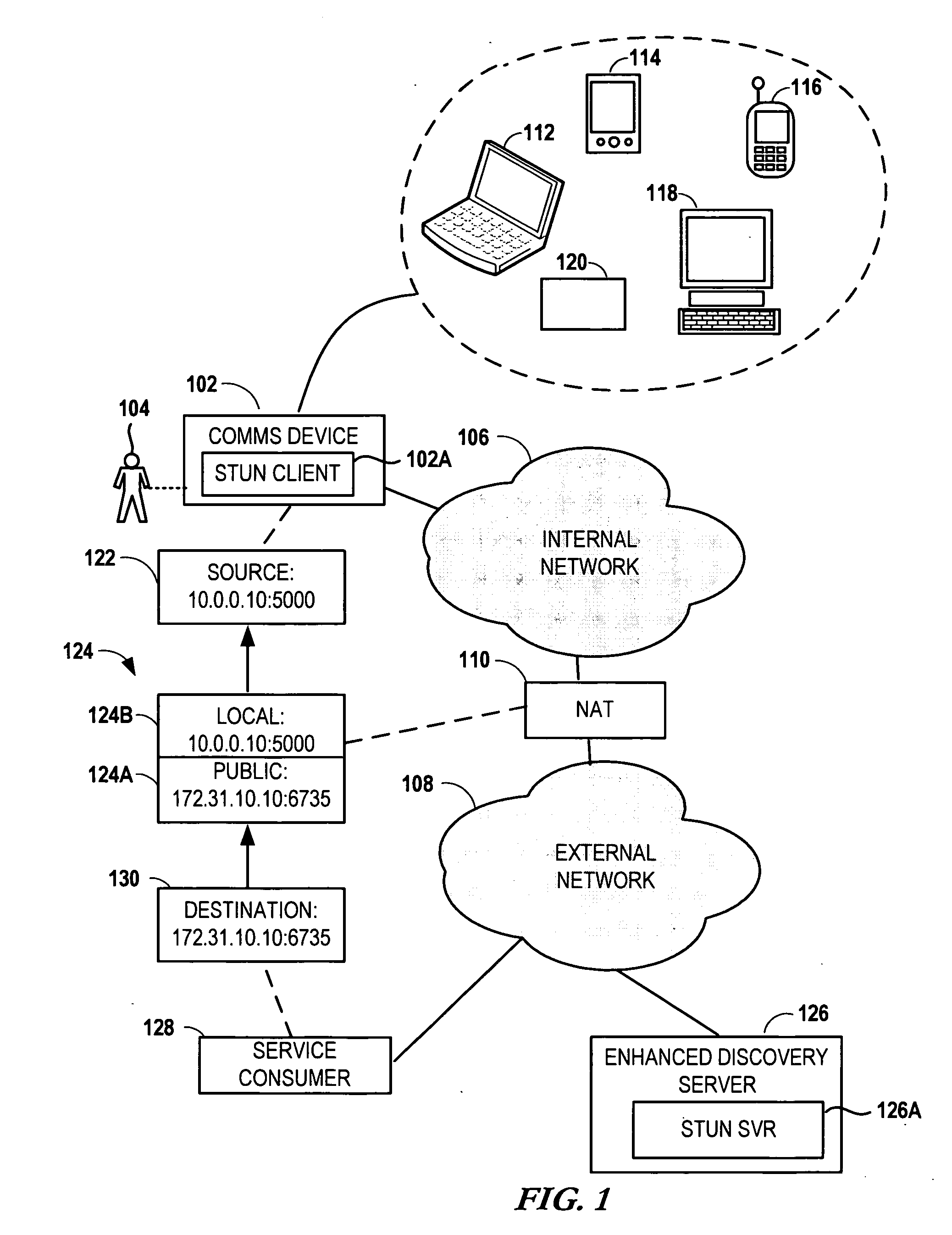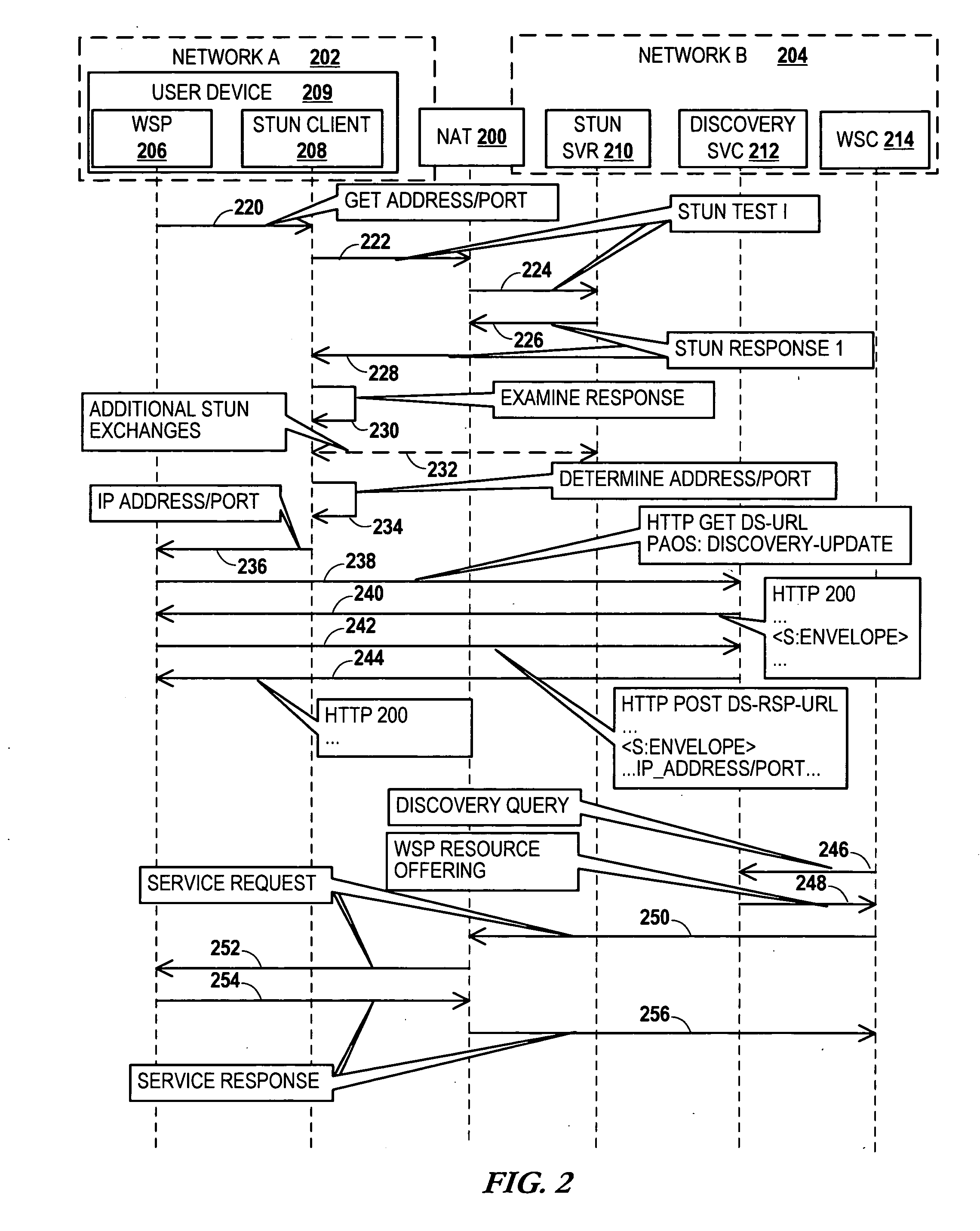Dynamic discovery of a network service on a mobile device
a network service and mobile device technology, applied in the field of computer networking, can solve the problems of not being able to provide, mobile devices may not even know their own addresses, and mobile devices may not be ip addressable,
- Summary
- Abstract
- Description
- Claims
- Application Information
AI Technical Summary
Benefits of technology
Problems solved by technology
Method used
Image
Examples
Embodiment Construction
[0022] In the following description of various exemplary embodiments, reference is made to the accompanying drawings that form a part hereof, and in which is shown by way of illustration various embodiments in which the invention may be practiced. It is to be understood that other embodiments may be utilized, as structural and operational changes may be made without departing from the scope of the present invention.
[0023] Generally, the present invention relates to network services provided from devices that traditionally are used as network clients. These client devices typically include desktop / portable computers and wireless devices such as PDAs and cell phones. However the present invention may be applicable to any processing device, including game consoles, desktop boxes, “smart” appliances, automotive electronics, etc. The term “network services” generally refer to the device's ability to provide a data processing operation on demand in response to a request originating elsew...
PUM
 Login to View More
Login to View More Abstract
Description
Claims
Application Information
 Login to View More
Login to View More - R&D
- Intellectual Property
- Life Sciences
- Materials
- Tech Scout
- Unparalleled Data Quality
- Higher Quality Content
- 60% Fewer Hallucinations
Browse by: Latest US Patents, China's latest patents, Technical Efficacy Thesaurus, Application Domain, Technology Topic, Popular Technical Reports.
© 2025 PatSnap. All rights reserved.Legal|Privacy policy|Modern Slavery Act Transparency Statement|Sitemap|About US| Contact US: help@patsnap.com



